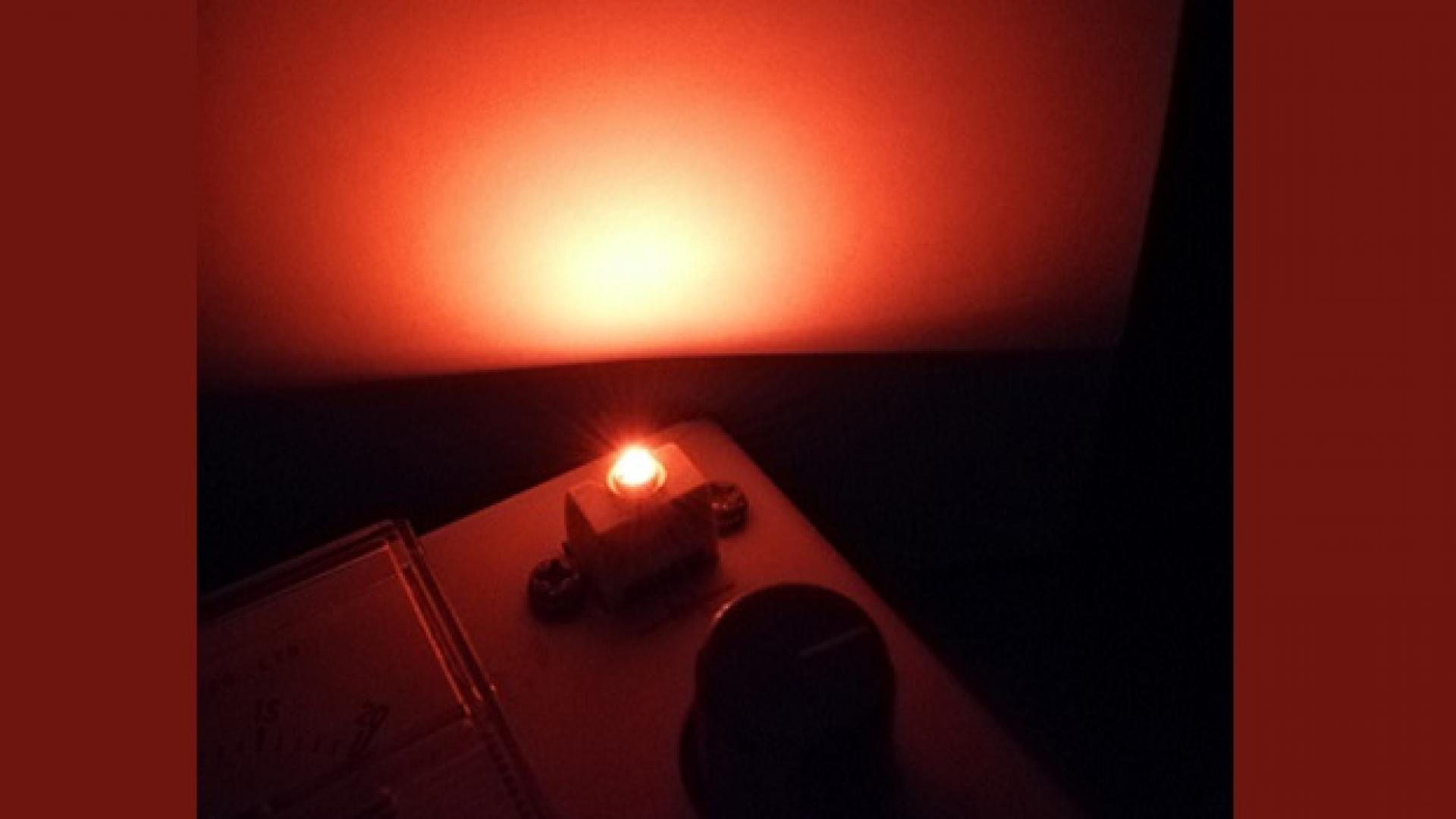© 2020 KAUST
In efforts to optimize the performance of light-emitting diodes (LEDs), KAUST researchers are looking at every aspect of the design, fabrication and operation of these devices. Now, they have succeeded in fabricating red LEDs, based on the naturally blue-emitting semiconductor indium gallium nitride, that are as stable as those based on indium gallium phosphide.
LEDs are optical sources made from semiconductors that offer improvements on conventional visible-light sources in terms of energy saving, smaller size and longer lifetimes. LEDs can emit across the spectrum, from the ultraviolet to blue (B), green (G), red (R) and into the infrared. And arrays of tiny RGB devices, so-called micro-LEDs, can be used to make vivid-color displays, which could underpin the next generation of monitors and televisions.
A major challenge facing the development of microLEDs is to integrate red, green and blue light into a single LED chip. Current RGB LEDs are made by combining two kinds of materials: red-light LEDs are made of indium gallium phosphide (InGaP), while blue and green LEDs comprise indium gallium nitride (InGaN) semiconductors. Integrating two material systems is difficult. “Creating RGB displays requires the mass transfer of the separate blue, green and red LEDs together,” says KAUST researcher Zhe Zhuang. An easier solution would be to create different-colored LEDs all on a single semiconductor chip.
Since InGaP semiconductors are unable to emit blue or green light, the only solution to making monolithic RGB micro-LEDs is to use InGaN. This material has the potential to shift its emission from blue to green, yellow and red by introducing more indium into the mix. And InGaN red LEDs have been predicted to have better performance than the current InGaP ones.

Zhuang, Daisuke Iida, Kazuhiro Ohkawa and their colleagues have succeeded in growing high-quality indium-rich InGaN to fabricate red LEDs using nanofabrication facilities at the KAUST Core Labs.
Read the full article


